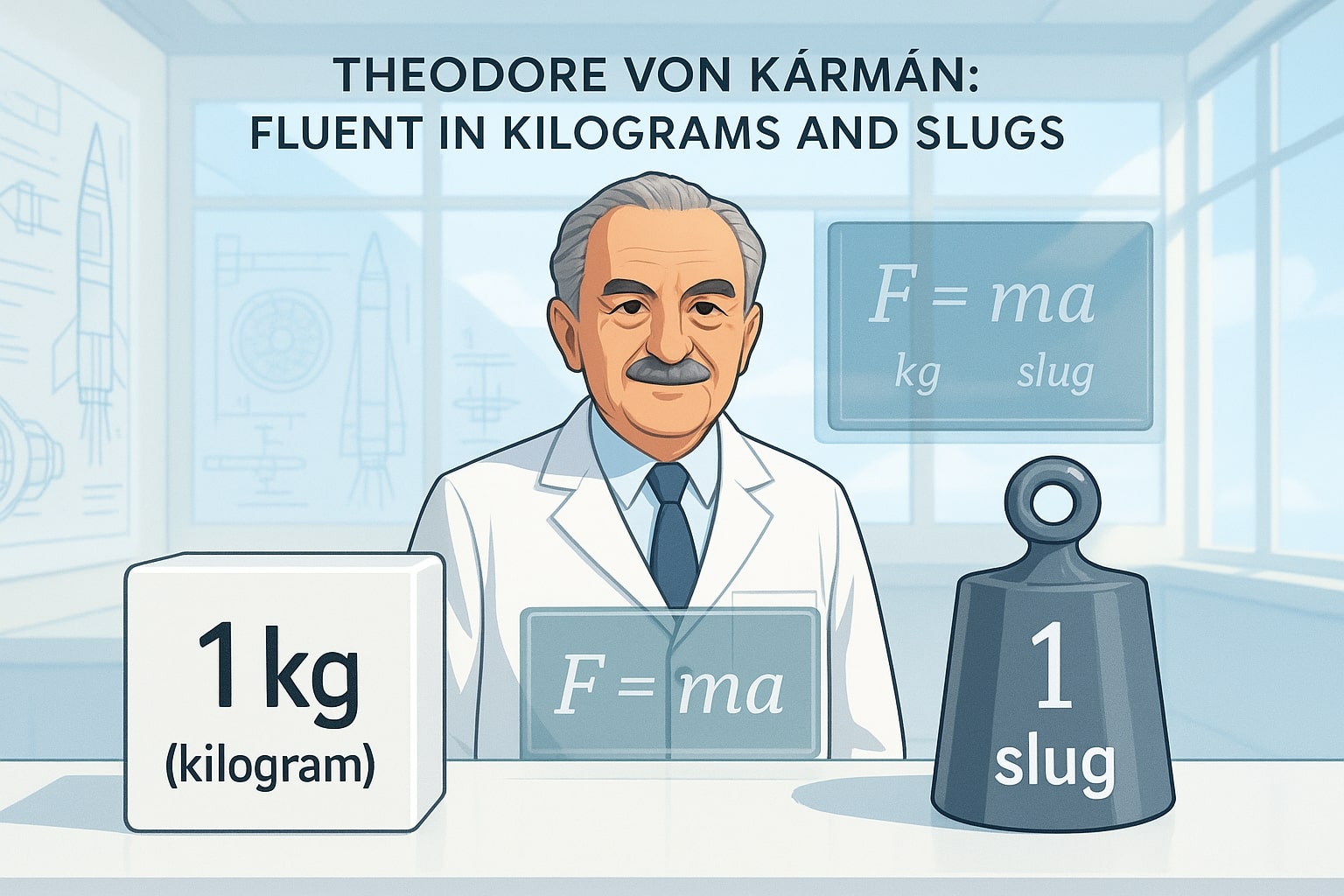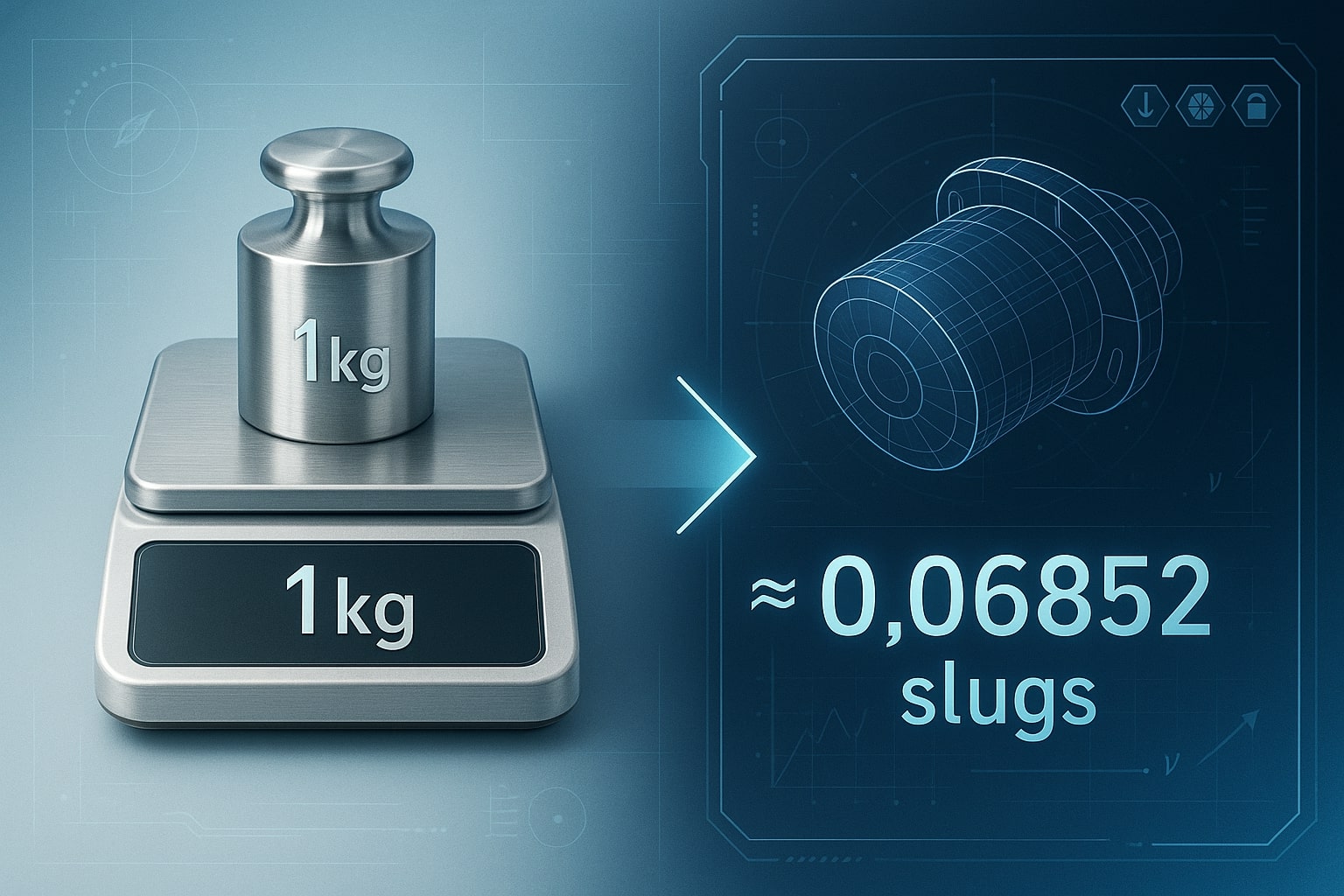kg to slug - How to convert Kilograms to Slugs?
In fields like aerospace engineering, classical mechanics, and military design, converting from kilograms to slugs plays a crucial role in aligning SI-based data with Imperial unit frameworks. This conversion is especially important when interpreting legacy systems, U.S.-based simulation models, or physics education materials that rely on foot–pound–second (FPS) units.
Kg and Slug:
-
A kilogram (kg) is the globally recognized SI unit of mass, defined by fundamental constants and used in science, commerce, and engineering.
-
A slug, by contrast, is a derived unit of mass in the Imperial system, structured so that one slug accelerates at 1 ft/s² under a force of 1 pound-force (lbf).
While rarely used outside the U.S., the slug persists in aerospace testing, U.S. Department of Defense standards, and engineering textbooks, making kg-to-slug conversion essential for cross-system clarity and unit compatibility.
Did you know?
-
The slug was invented specifically to simplify Newton’s second law in the Imperial system—so that force, mass, and acceleration align without conversion factors.
-
Unlike the metric kilogram, the slug ties mass directly to gravitational force, making it especially handy in aerospace thrust and load calculations.
-
A person with a mass of 70 kilograms would be about 4.8 slugs—a term once commonly used in U.S. Air Force pilot training manuals.
-
The name "slug" was coined by British physicist Arthur Mason Worthington, who once said mass should have “some kick” in mechanics.
-
The slug may be obscure globally, but it’s still found in NASA propulsion software written before SI standardization.
-
One slug is the amount of mass that experiences exactly one pound-force of acceleration when moving at 1 ft/s².
Theodore von Kármán and the Language of Slugs
Theodore von Kármán, a Hungarian-American physicist and aerospace pioneer, played a pivotal role in early American rocketry and supersonic flight. At the Jet Propulsion Laboratory (JPL), which he helped found in the 1940s, von Kármán frequently worked across both SI and Imperial systems—switching between kilograms and slugs depending on the model or collaborator.
He insisted on keeping calculations in slugs for consistency with U.S. engineering standards, especially in force and acceleration modeling for missile design. But as global collaboration increased, von Kármán became one of the first to advocate for dual-unit fluency, warning that mismatched mass units could cause catastrophic miscalculations. His ability to speak the “language of slugs and kilograms” helped bridge scientific communities—and laid the groundwork for today’s standardized aerospace equations.

Conclusion
While the slug may seem like a relic of the past, its role in engineering, aerospace, and legacy systems remains surprisingly relevant. Converting from kilograms to slugs isn’t just about math—it’s about translating between worlds: SI precision and Imperial practicality. For scientists, engineers, and students working across systems, understanding this conversion is more than academic—it’s essential to ensuring accuracy, safety, and global collaboration in critical industries.


